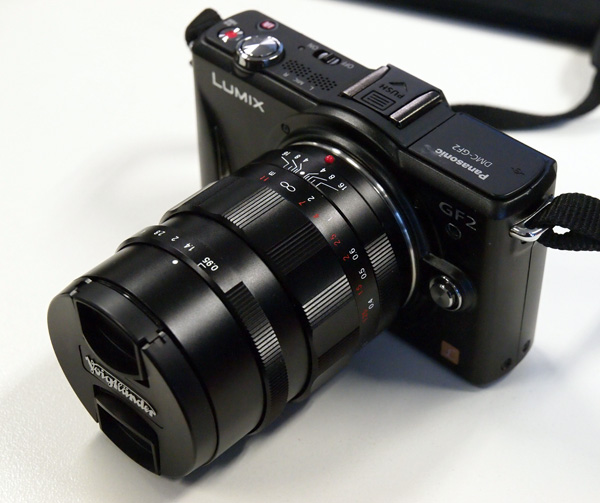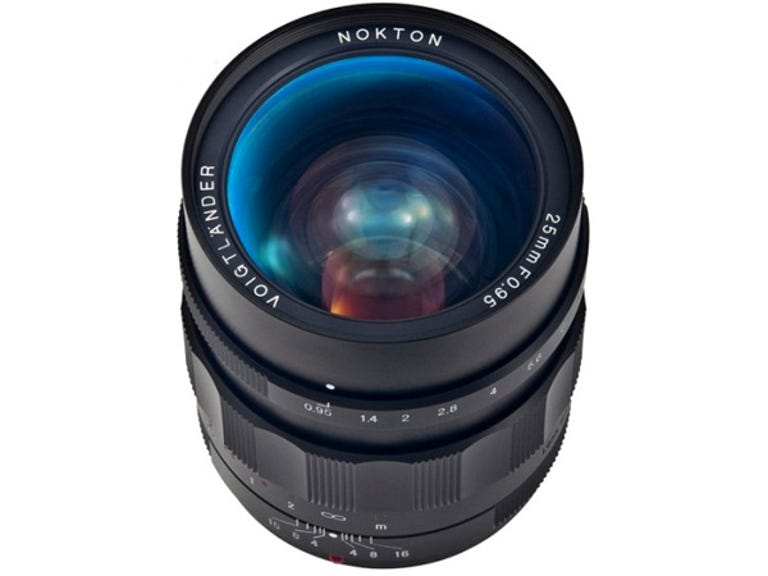 Why You Can Trust CNET
Why You Can Trust CNET Voigtlander Nokton 25mm f/0.95 Micro Four Thirds review: Voigtlander Nokton 25mm f/0.95 Micro Four Thirds
The Nokton f/0.95 is an astounding lens. If you are seriously investing in Micro Four Thirds cameras, this lens offers excellent build quality, ease of use and images, which are all worth the investment.
Design and features
It's very rare to get enthralled by the build quality of lenses unless you start venturing in to Leica territory. This lens from Voigtlander, manufactured by Cosina, is no ordinary lens. Made in Japan with an all-metal construction, it feels amazing to use — all 410 grams. It's almost double the weight of some of the lightest cameras it can be matched with from Panasonic and Olympus.
The Good
The Bad
The Bottom Line
We matched the Nokton with the Panasonic Lumix GF2 and it was an excellent combination, not too lens-heavy despite the small footprint of this Micro Four Thirds camera. The aperture and focus rings are beautifully textured and have very good resistance, which makes them easy (though not quick) to turn. The aperture ring at the front of the camera has defined clicks which stop the lens down from f/0.95 all the way to f/16. Other markings on the lens are the focus measurements in both metres and feet, while the focus ring itself does not rotate freely but instead stops at either extreme. The minimum focusing distance is 17cm and the filter thread is 52mm (without the lens hood attached).

The Nokton on the GF2 (Credit: CBSi)
The Nokton is an all-manual focus lens and it cannot be used when the camera is in automatic (intelligent Automatic mode in the case of the Panasonic), though it will function in Program mode. This also means that no shutter or aperture measures are recorded in the EXIF data, just ISO. Other minor design quirks include the pinch to remove lens cap, which does come free when the camera and lens is in a bag that doesn't sit snug around the body.
This is a fixed focal length lens at 25mm for the Micro Four Thirds system, which acts like a 50mm lens on a 35mm camera. It has 10 blades and 11 elements in eight groups.
Image quality
Naturally, given the maximum aperture of the Nokton, you'll want to shoot everything with this lens wide open. It can be hard to determine exactly where you need to select focus, particularly when shooting in low lighting, so you do need to make use of the manual focus enlargement on screen. To get a sharp shot at f/0.95, it is necessary to be very precise with the camera movement once the focus is set. Moving a centimetre or two away from the focus point can throw the whole picture out.
There's an eerie glow at f/0.95 of contrasty objects, as can be seen in the 100 per cent crop of the shot below.
The 100 per cent crop (below) of a night shot taken on the Nokton. (Credit: CBSi)
Also, shooting in bright daylight might warrant investing in a neutral density (ND) filter so photos aren't overexposed. It would also be useful if you wished to shoot using a slower shutter speed. Images are at their sharpest as the lens is stopped down. At f/5.6 to f/8 the lens is incredibly sharp, offering excellent edge-to-edge clarity.
The bokeh that this lens produces is smooth and creamy, almost dream-like in the right circumstances. Vignetting is also kept to a bare minimum, with very little evident even at f/0.95.
A huge advantage for night shooters is the ability to clearly see the image on screen when opened up at the maximum aperture. It is really like wearing a set of night goggles when there's minimum light available. Naturally, the higher the resolution screen on your Micro Four Thirds camera, the better.
Image samples
Click each image for full-sized samples from the Nokton. Images were taken on the Panasonic Lumix GF2. No post-processing has been done to alter these photos.
Conclusion
The Nokton f/0.95 is an astounding lens. If you are seriously investing in Micro Four Thirds cameras, this lens offers excellent build quality, ease of use and images, which are all worth the investment.
At the time of writing, this lens retails for AU$895 in Australia through distributor, Mainline Photographics. Not only is this an excellent price for such a fast lens, it's also incredibly competitive with retail prices for the same lens around the world.


